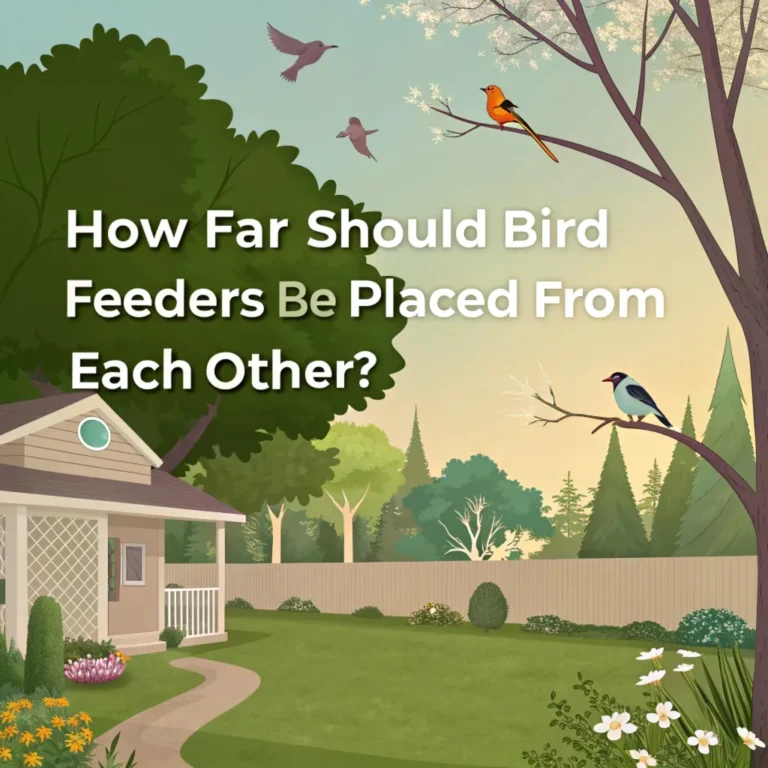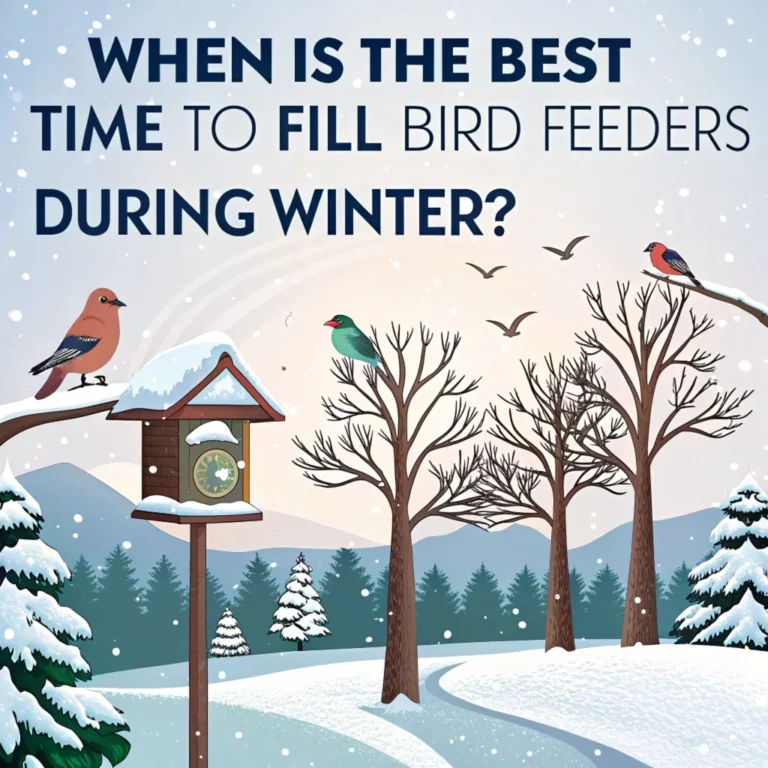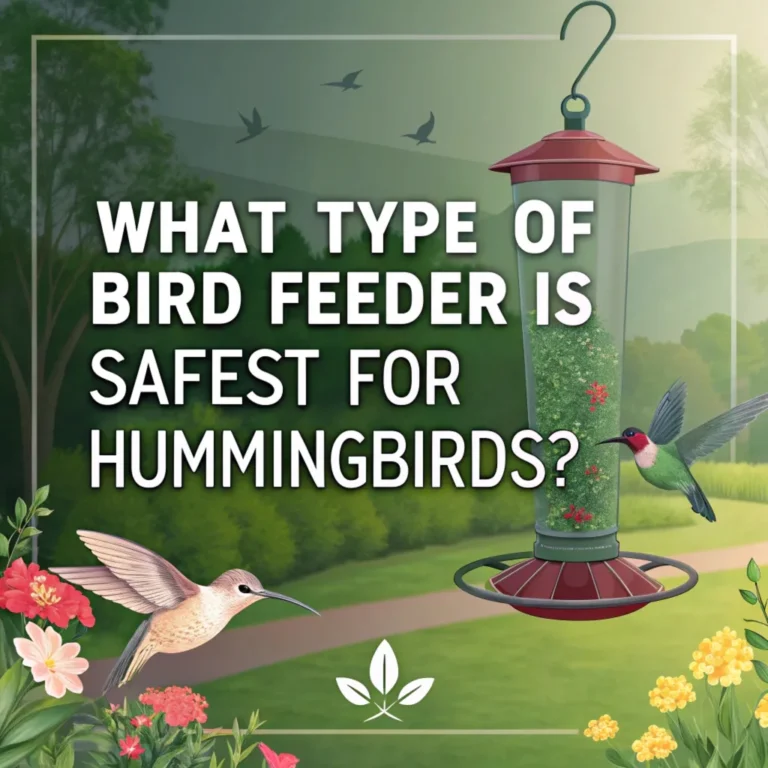What Materials Are Best for Durable Outdoor Bird Feeders?
Bird feeders play a crucial role in attracting feathered friends to our outdoor spaces.
Choosing the right material for your bird feeder ensures its longevity and effectiveness.
This post explores the best materials for durable outdoor bird feeders, helping you make an informed decision for your backyard bird sanctuary.

Key Takeaways:
- Recycled plastic feeders offer durability, easy cleaning, and environmental benefits
- Metal feeders provide strength and resistance to squirrel damage
- Wood feeders have a natural aesthetic but require more maintenance
- Material choice affects feeder lifespan, bird safety, and environmental impact
- Proper maintenance is crucial for all feeder types to ensure bird health
Creating a welcoming environment for birds in your backyard is not just about providing food; it’s about creating a safe and sustainable feeding station.
The material you choose for your bird feeder plays a crucial role in achieving this goal. From recycled plastic to sturdy metal and classic wood, each material offers unique benefits and considerations.
As you explore the options presented in this post, keep in mind that the best choice for your yard depends on factors such as local climate, bird species in your area, and your personal preferences for maintenance and aesthetics.
Recycled Plastic: A Sustainable and Durable Choice
Recycled plastic bird feeders have emerged as a top choice for durability and sustainability. These feeders offer several advantages:
Long-Lasting Performance
Recycled plastic feeders can last up to five times longer than wooden alternatives. This extended lifespan reduces the need for frequent replacements, making them a cost-effective option for bird enthusiasts.
Weather Resistance
Unlike wood, recycled plastic resists rot, mildew, and termite damage. It maintains its structural integrity in various weather conditions, ensuring your feeder remains functional year-round.
Easy Maintenance
Plastic feeders are easier to clean than wooden ones. Their non-porous surface prevents bacteria growth, making them safer for birds. Regular cleaning with a mild soap solution or diluted bleach keeps these feeders hygienic.
Environmental Benefits
By choosing recycled plastic feeders, you contribute to reducing plastic waste. Many manufacturers use post-consumer plastic, keeping materials out of landfills and giving them a new purpose.
Recycled plastic feeders offer a win-win solution for both bird enthusiasts and the environment. Their durability ensures that you’ll be able to enjoy watching birds in your yard for years to come, while their eco-friendly nature aligns with sustainable practices.
The versatility of recycled plastic allows for a wide range of feeder designs, from simple tubes to more elaborate structures, catering to different bird species and aesthetic preferences.
Metal Feeders: Strength and Durability
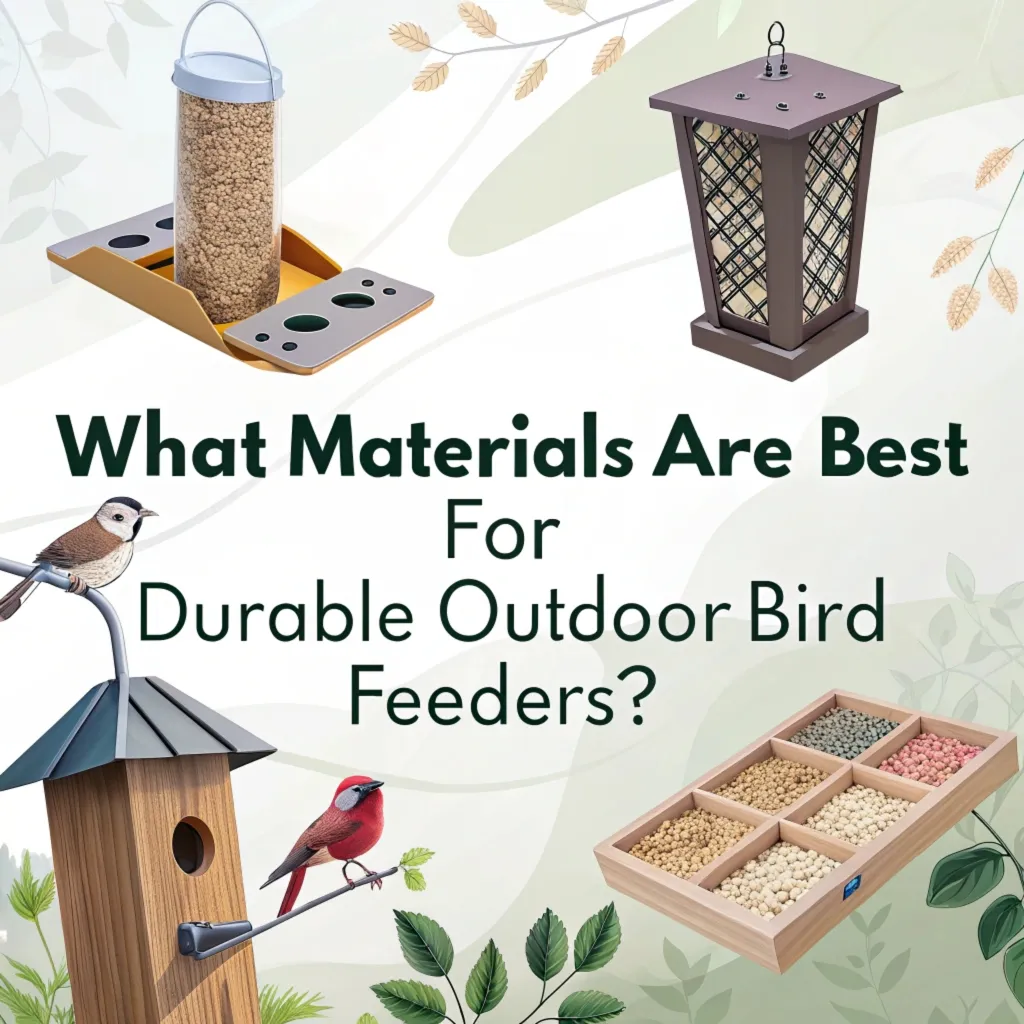
Metal bird feeders offer unique advantages for outdoor use:
Squirrel Resistance
Metal feeders, especially those made from sturdy materials like steel, provide excellent protection against squirrels. Their tough construction resists gnawing and damage from persistent pests.
Weather Durability
Quality metal feeders withstand harsh weather conditions. They don’t warp or crack in extreme temperatures, ensuring year-round functionality.
Variety of Designs
Metal feeders come in various styles, from simple tube feeders to elaborate decorative pieces. This versatility allows you to choose a feeder that complements your outdoor décor.
Longevity
With proper care, metal feeders can last for many years. Their durability makes them a wise investment for serious bird watchers.
Metal bird feeders stand out for their robustness and longevity. They are particularly suitable for areas with high squirrel activity or extreme weather conditions.
The variety of designs available in metal feeders means you can find options that not only serve their practical purpose but also enhance the visual appeal of your outdoor space.
Consider factors like rust resistance and coating quality when selecting a metal feeder to ensure it maintains its appearance and functionality over time.
Wood Feeders: Natural Aesthetics with Considerations
Wooden bird feeders offer a classic, natural look but require more attention:
Visual Appeal
Wood feeders blend seamlessly with natural surroundings, creating an attractive feeding station for birds and observers alike.
Maintenance Needs
Wood requires regular maintenance to prevent rot and decay. Applying a bird-safe sealant helps protect the wood from moisture and extends its life.
Cleaning Challenges
Wooden feeders can be more difficult to clean thoroughly. Their porous surface can harbor bacteria, necessitating more frequent and careful cleaning.
Limited Lifespan
Even with proper care, wooden feeders typically have a shorter lifespan than plastic or metal alternatives. They may need replacement more often, especially in harsh climates.
Wooden bird feeders offer a natural charm that many bird enthusiasts appreciate. Their rustic appearance can enhance the overall aesthetic of your garden or backyard.
However, it’s important to weigh this visual appeal against the increased maintenance requirements and potentially shorter lifespan.
For those willing to invest the time in regular upkeep, wooden feeders can provide a beautiful and inviting feeding station for local birds. Consider using cedar or redwood for better natural resistance to decay and insects.
Choosing the Right Material for Your Needs
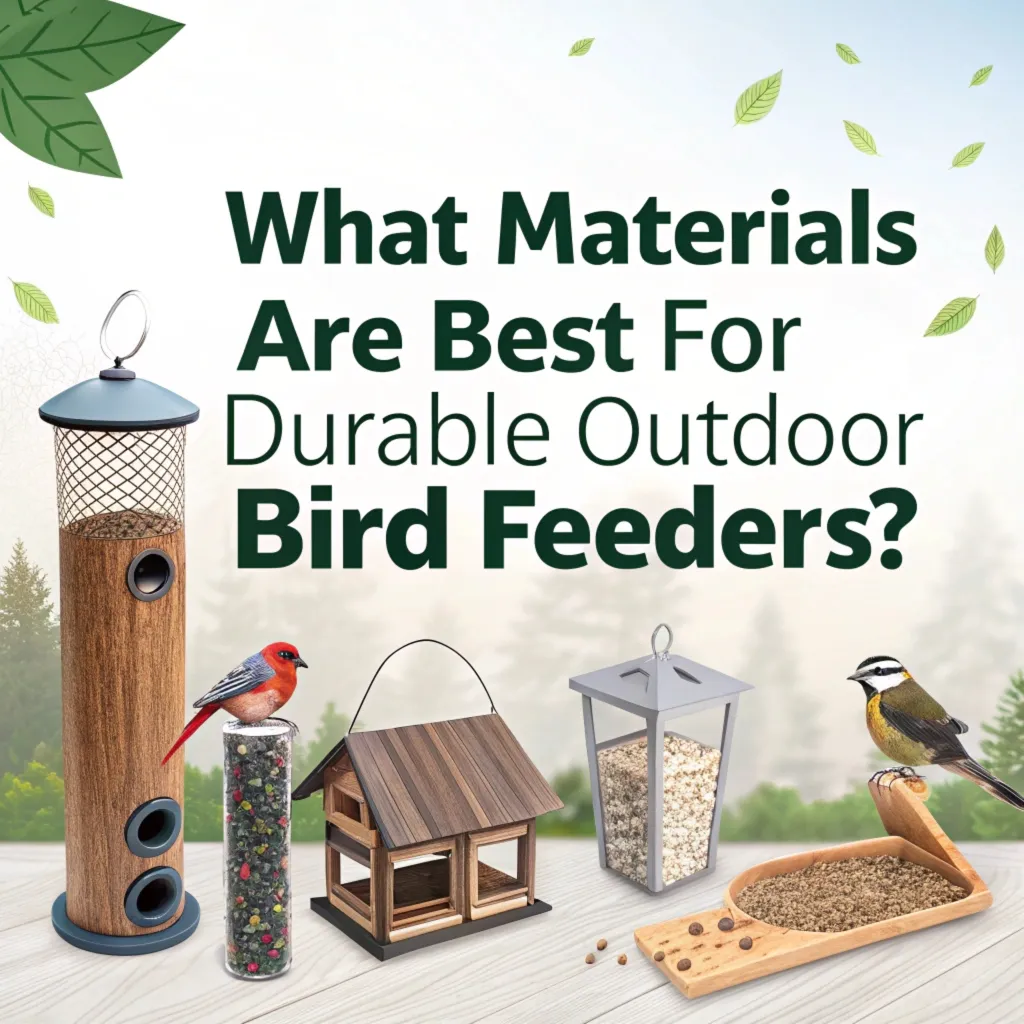
When selecting a bird feeder material, consider these factors:
Climate Considerations
In areas with extreme weather, opt for weather-resistant materials like recycled plastic or metal. These materials withstand rain, snow, and temperature fluctuations better than wood.
Bird Species
Different bird species prefer various feeder types. Research the birds in your area to choose a feeder material and design that attracts your desired species.
Maintenance Commitment
Consider how much time you’re willing to spend on feeder maintenance. Plastic and metal feeders generally require less upkeep than wooden ones.
Environmental Impact
If sustainability is a priority, choose feeders made from recycled materials or those with a minimal environmental footprint.
The choice of material for your bird feeder is more than just a matter of aesthetics; it’s about creating a safe and sustainable feeding environment for your feathered visitors. Consider factors like local climate, bird preferences, and your own maintenance capabilities when making your decision.
Remember that the best feeder is one that you can consistently maintain and that meets the needs of the birds in your area.
Maintaining Your Bird Feeder
Regardless of material, proper maintenance is crucial:
- Clean feeders regularly to prevent disease spread among birds
- Inspect feeders for damage and replace broken parts promptly
- Keep seed dry to prevent mold growth
- Position feeders away from predators and in areas safe for birds
Regular maintenance is key to ensuring your bird feeder remains a safe and attractive feeding station. Regardless of the material you choose, consistent cleaning and inspection are essential for the health of visiting birds and the longevity of your feeder.
Consider setting up a maintenance schedule to ensure you don’t overlook these important tasks. This routine care will help you enjoy bird watching for years to come.
Conclusion
Choosing the right material for your outdoor bird feeder involves balancing durability, maintenance needs, and environmental considerations. Recycled plastic feeders offer an excellent combination of longevity, easy care, and eco-friendliness.
Metal feeders provide strength and pest resistance, while wooden feeders offer natural beauty but require more upkeep.
By selecting the appropriate material and maintaining your feeder properly, you create a safe, attractive feeding station that benefits birds and enhances your outdoor space.
Investing in a quality bird feeder is not just about attracting birds; it’s about creating a sustainable and enjoyable bird-watching experience. Whether you choose recycled plastic, metal, or wood, remember that consistent maintenance is key to ensuring your feeder remains a safe haven for local birds.
As you embark on your bird-feeding journey, consider experimenting with different feeder types and materials to discover what works best in your unique environment.
FAQs
How often should I clean my bird feeder?
Clean your bird feeder at least once every two weeks, more frequently during wet weather or if you notice moldy seed.
Can I use household cleaners on my bird feeder?
Avoid harsh chemicals. Use a mild soap solution or a mixture of water and vinegar for cleaning. Rinse thoroughly and dry completely before refilling.
Are plastic feeders safe for birds?
High-quality plastic feeders are safe for birds. Choose feeders made from durable, food-grade plastics to ensure bird safety.
How can I prevent squirrels from damaging my feeder?
Use squirrel-proof designs or add baffles to your feeder pole. Metal feeders are more resistant to squirrel damage than plastic or wood.
What’s the best material for a bird feeder in a rainy climate?
In rainy areas, recycled plastic or metal feeders with good drainage are best. They resist water damage and help keep seed dry.

Luna is the passionate founder and author of Birds and You, a website dedicated to sharing her love for birds with fellow enthusiasts. Through her engaging articles and guides, she aims to educate and inspire others to explore the fascinating world of birds. When she’s not writing, you can find Luna observing birds in their natural habitats or sharing beautiful bird photography on Pinterest. Join her on this journey to celebrate and protect our feathered friends!



